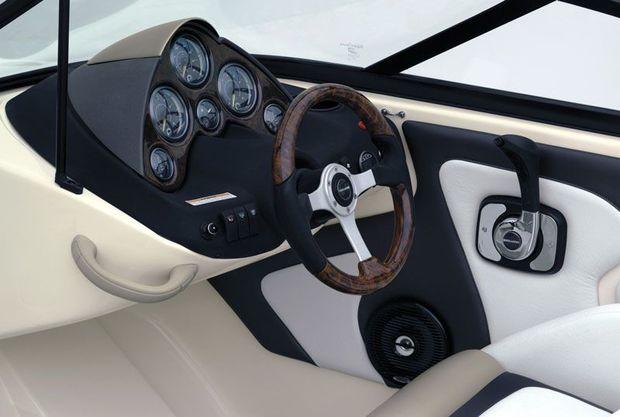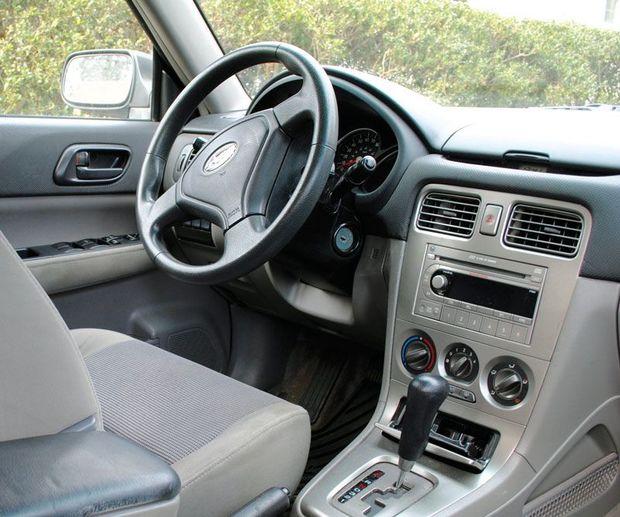Safety Series: Part III

Here’s a shibboleth you probably haven’t heard in the boating safety courses you’ve taken over the years: “A boat is not a car.”
Simplistic? Even silly? Maybe so, but some experts say ignoring that truism is one of the hidden causes of accidents that they witness on the water these days.
You’ve probably seen this yourself, particularly with first-time boaters. The boat-operator climbs into a 16-foot runabout, turns the key, and zooms off into the Bay. He has little or no training and no real appreciation of how water-borne vessels behave or what the rules of the road are. By the time he realizes he’s in trouble, it may be too late.
But it’s not just beginning boaters. Even experienced mariners can unconsciously revert to their car-driving habits if they don’t discipline themselves to think as mariners when they’re at the helm, says Chris Edmonston, president of the BoatU.S. Foundation, whose primary mission is promoting boating safety.
“Too many people treat driving a boat like driving a car—they get in and just go, and they look straight ahead and don’t look around them,” Edmonston says. “They’re so anxious to get out on the water that they don’t take the time to prepare for their trip or to pay attention to what they need to do.”
It’s easy to see how the human brain can make such a mistake. At first glance, cars and boats—especially small powerboats—look a lot alike. Both have steering wheels, windshields, gearshifts, and throttles. In both, you turn the key to start the engine, rotate the wheel (or helm) to steer right or left, and pull or push a lever to increase your speed.
But the similarities quickly disappear when you consider what a boater has to face, compared to what a car driver confronts:

Weather
Yes, driving a car in a thunderstorm or moderate snowfall can be daunting, but the motorist rarely has to cancel his trip because of inclement weather. If it’s hot, he turns on his air-conditioner. Cold? On goes the heater. For a boater, however, weather is a major consideration.
Wind
Okay, the Chesapeake Bay Bridge can be tricky, sometimes even dangerous in high winds, which is why authorities close it when the blow gets going. On most roads, however, relatively strong crosswinds usually require little more than some extra attention by the driver. On the water, they can be life-threatening.
Current, Tides, Water Depth, and Sea-State
These obviously aren’t a problem on land, because they’re not even present. But when you’re operating a boat, you have to be aware of all of them and take account of their impact, both in navigating and in steering your vessel.
 Fuel
Fuel
Gasoline is potentially explosive whether it’s in a boat or a car, but in automobiles gasoline fumes can vent through the space between the chassis and the road. In a boat, however—particularly an enclosed vessel with an inboard engine—they settle in the bilge and can explode without warning.
Traffic
Most U.S. roads have clearly defined curbs, shoulders, dividing lines, and signs, and you grow up learning the rules for dealing with traffic from the time you’re old enough to cross the street. Nautical aids to navigation are more difficult to discern and are farther apart. And nautical charts are far more complex than highway maps.
Sinking
Although land vehicles can roll into a gully, car drivers rarely have to worry about sinking, unless they’ve driven into flood waters or an enormous big-city pothole. By contrast, the possibility of sinking is on every boater’s mind—or should be, if he or she is properly prepared.
Crew
In a car, the driver usually has only himself to worry about. Operating a vessel often takes several crewmembers. The skipper needs to know whether they’re competent boaters. Are they trained how to function on your boat? Physically fit to do their jobs? Becoming fatigued or drunk? Can any of them take over if you’re hurt?
Emergencies
On land, coping with a fire or medical emergency is relatively easy: Pull over, call 911, get out of the car, and stand by. In a boat, however, there’s usually no place to do that. First-responders usually travel by water, which takes extra time. And there’s no escape from a fire except the water. You need to be prepared—and act fast.
Navigation and Seamanship
There’s no getting around it: Following a route on a map or GPS and reaching your destination are far easier when you’re in an automobile than on a boat—in part because of all the extra factors we’ve discussed above. On a highway or in a city, you always have signs to guide you.
Oh, and did I mention brakes? Boats don’t have them, so you can’t stop on a dime the way you can with a car. Sure, you can shift into reverse to help slow your boat, but it’s not nearly as effective as braking a car. Indeed, sometimes weather conditions are such that you
can’t really stop unless you anchor—and that’s slow and imprecise.
One of the most important differences is that with a car, you can usually escape problems by stopping at the side of the road and getting out. With a boat, you can’t just walk away. Often your only way out—in case of fire or sinking, for example—is to go overboard, which presents another set of hazards.
About the Author: Art Pine is a Coast Guard-licensed captain and a longtime powerboater and sailor on the Chesapeake Bay.
To read Part I in this series, Seven Potentially Deadly Sins of Boating, click here.
To read Part II in this series, Simply Avoiding Boating Accidents, click here.  Here’s a shibboleth you probably haven’t heard in the boating safety courses you’ve taken over the years: “A boat is not a car.”
Simplistic? Even silly? Maybe so, but some experts say ignoring that truism is one of the hidden causes of accidents that they witness on the water these days.
You’ve probably seen this yourself, particularly with first-time boaters. The boat-operator climbs into a 16-foot runabout, turns the key, and zooms off into the Bay. He has little or no training and no real appreciation of how water-borne vessels behave or what the rules of the road are. By the time he realizes he’s in trouble, it may be too late.
But it’s not just beginning boaters. Even experienced mariners can unconsciously revert to their car-driving habits if they don’t discipline themselves to think as mariners when they’re at the helm, says Chris Edmonston, president of the BoatU.S. Foundation, whose primary mission is promoting boating safety.
“Too many people treat driving a boat like driving a car—they get in and just go, and they look straight ahead and don’t look around them,” Edmonston says. “They’re so anxious to get out on the water that they don’t take the time to prepare for their trip or to pay attention to what they need to do.”
It’s easy to see how the human brain can make such a mistake. At first glance, cars and boats—especially small powerboats—look a lot alike. Both have steering wheels, windshields, gearshifts, and throttles. In both, you turn the key to start the engine, rotate the wheel (or helm) to steer right or left, and pull or push a lever to increase your speed.
But the similarities quickly disappear when you consider what a boater has to face, compared to what a car driver confronts:
Here’s a shibboleth you probably haven’t heard in the boating safety courses you’ve taken over the years: “A boat is not a car.”
Simplistic? Even silly? Maybe so, but some experts say ignoring that truism is one of the hidden causes of accidents that they witness on the water these days.
You’ve probably seen this yourself, particularly with first-time boaters. The boat-operator climbs into a 16-foot runabout, turns the key, and zooms off into the Bay. He has little or no training and no real appreciation of how water-borne vessels behave or what the rules of the road are. By the time he realizes he’s in trouble, it may be too late.
But it’s not just beginning boaters. Even experienced mariners can unconsciously revert to their car-driving habits if they don’t discipline themselves to think as mariners when they’re at the helm, says Chris Edmonston, president of the BoatU.S. Foundation, whose primary mission is promoting boating safety.
“Too many people treat driving a boat like driving a car—they get in and just go, and they look straight ahead and don’t look around them,” Edmonston says. “They’re so anxious to get out on the water that they don’t take the time to prepare for their trip or to pay attention to what they need to do.”
It’s easy to see how the human brain can make such a mistake. At first glance, cars and boats—especially small powerboats—look a lot alike. Both have steering wheels, windshields, gearshifts, and throttles. In both, you turn the key to start the engine, rotate the wheel (or helm) to steer right or left, and pull or push a lever to increase your speed.
But the similarities quickly disappear when you consider what a boater has to face, compared to what a car driver confronts:
 Fuel
Fuel